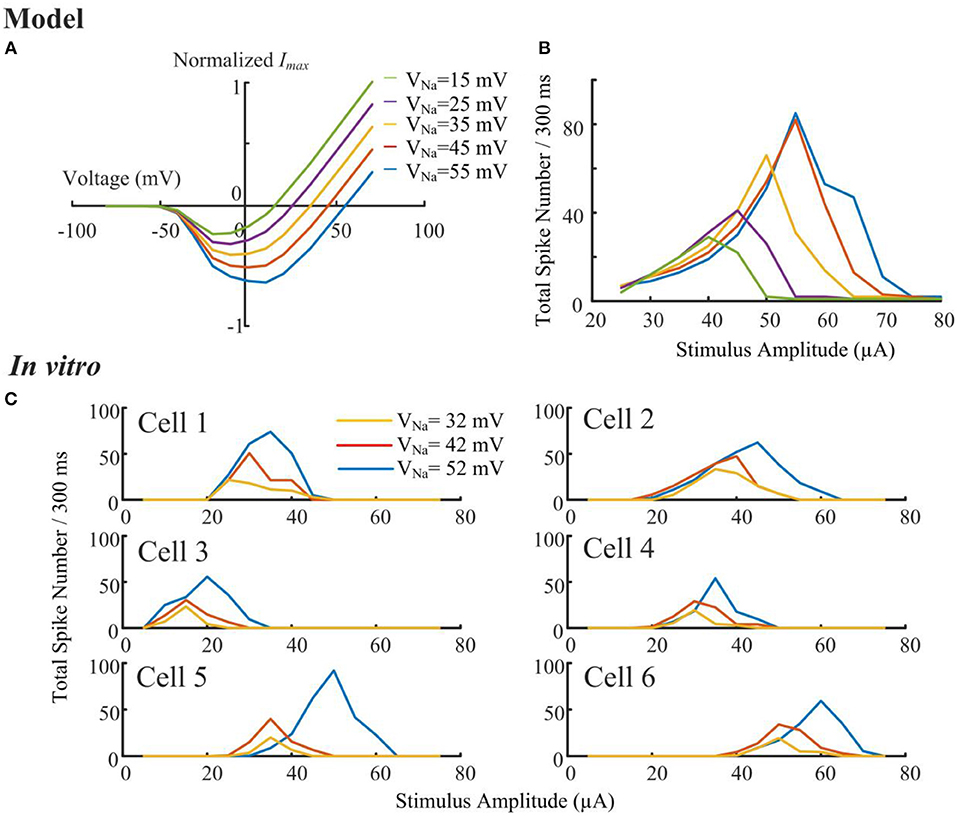
95% of researchers rate our articles as excellent or good
Learn more about the work of our research integrity team to safeguard the quality of each article we publish.
Find out more
ERRATUM article
Front. Neurosci. , 28 August 2019
Sec. Neuroprosthetics
Volume 13 - 2019 | https://doi.org/10.3389/fnins.2019.00910
This article is part of the Research Topic Bridging the Gap in Neuroelectronic Interfaces View all 29 articles
This article is an erratum on:
Mediating Retinal Ganglion Cell Spike Rates Using High-Frequency Electrical Stimulation
An Erratum on
Mediating Retinal Ganglion Cell Spike Rates Using High-Frequency Electrical Stimulation
by Guo, T., Tsai, D., Yang, C. Y., Al Abed, A., Twyford, P., Fried, S. I., et al. (2019). Front. Neurosci. 13:413. doi: 10.3389/fnins.2019.00413
Due to a production error, the captions within Figure 6C artwork have been incorrectly labeled as “blue (32 mV), red (42 mV), and orange (52 mV)” from top to bottom, instead of “orange (32 mV), red (42 mV), and blue (52 mV)”. The corrected Figure 6 appears below.

Figure 6. Sodium reversal potentials alter the strength-dependent response. (A) Normalized I-V relationship of the model RGC sodium current for various reversal potentials (VNa). Shifting VNa to a more positive value delays the reversal of the sodium current. (B) The modeled stimulus-response profile for various VNa values. Shifting VNa to a more positive value increases RGC excitability during HFS, postponing the suppressive effect, and vice versa. (C) In vitro results of HFS response curves with different VNa values (N = 6). The experimentally recorded RGC responses in mouse RGCs generally agree with the simulation results shown in panel B, with respect to the changes in amplitude and width of the response curve. (D1,D2) Comparison of model-prediction (red) and experimental data (black) in response to different Na+ solutions. Model predictions and in vitro data exhibited similar normalized trends of the total elicited spike number during all pulse trains (D1), and the normalized onset of the falling phase in the spike-stimulus curve in which the total spike numbers saturated or declined (D2). Examples of total elicited spike number and onset was provided in subplots in D1 and D2, respectively. The error bars indicate standard deviation.
The publisher apologizes for this mistake. The original article has been updated.
Keywords: neuromodulation, retinal ganglion cell, high-frequency electrical stimulation, retinal implant, computational modeling, in vitro patch-clamp
Citation: Frontiers Production Office (2019) Erratum: Mediating Retinal Ganglion Cell Spike Rates Using High-Frequency Electrical Stimulation. Front. Neurosci. 13:910. doi: 10.3389/fnins.2019.00910
Received: 16 August 2019; Accepted: 16 August 2019;
Published: 28 August 2019.
Approved by:
Frontiers Editorial Office, Frontiers Media SA, SwitzerlandCopyright © 2019 Frontiers Production Office. This is an open-access article distributed under the terms of the Creative Commons Attribution License (CC BY). The use, distribution or reproduction in other forums is permitted, provided the original author(s) and the copyright owner(s) are credited and that the original publication in this journal is cited, in accordance with accepted academic practice. No use, distribution or reproduction is permitted which does not comply with these terms.
*Correspondence: Frontiers Production Office, cHJvZHVjdGlvbi5vZmZpY2VAZnJvbnRpZXJzaW4ub3Jn
Disclaimer: All claims expressed in this article are solely those of the authors and do not necessarily represent those of their affiliated organizations, or those of the publisher, the editors and the reviewers. Any product that may be evaluated in this article or claim that may be made by its manufacturer is not guaranteed or endorsed by the publisher.
Research integrity at Frontiers

Learn more about the work of our research integrity team to safeguard the quality of each article we publish.